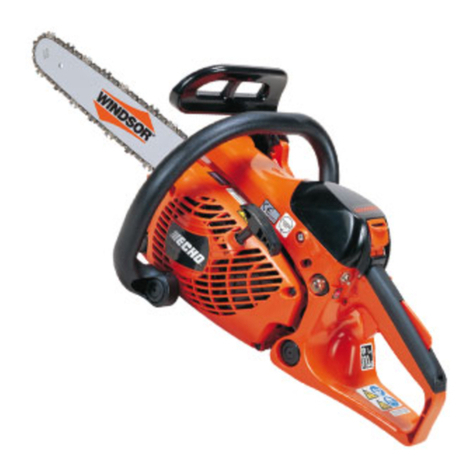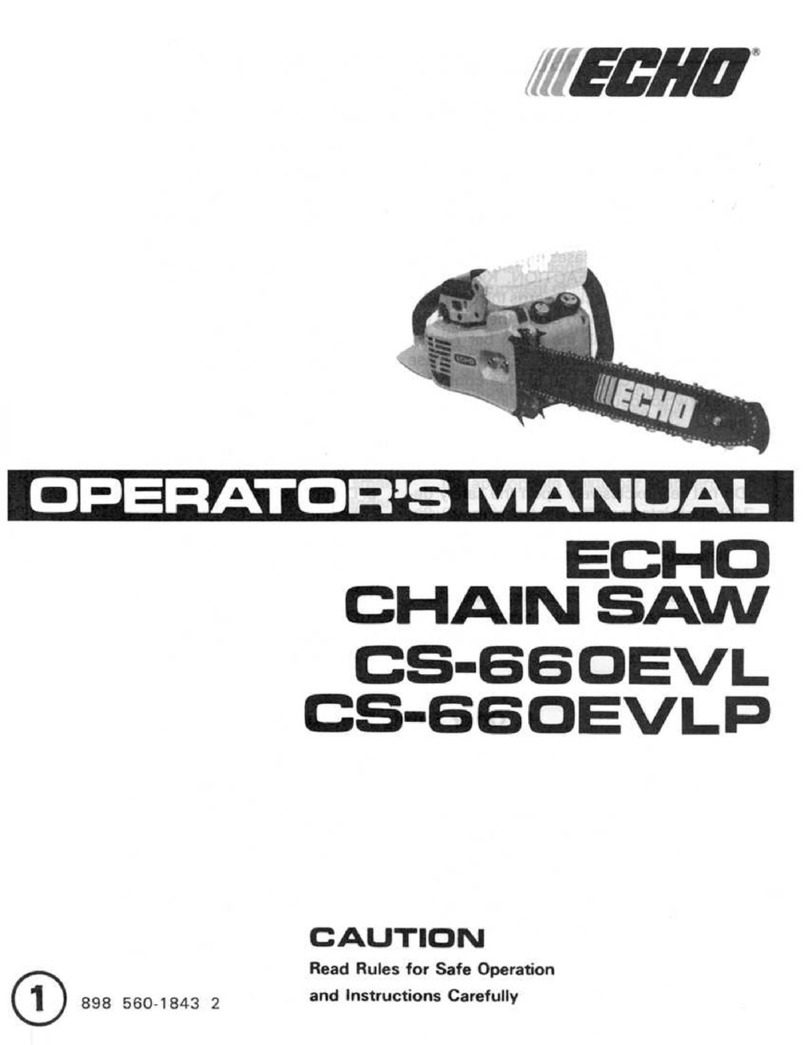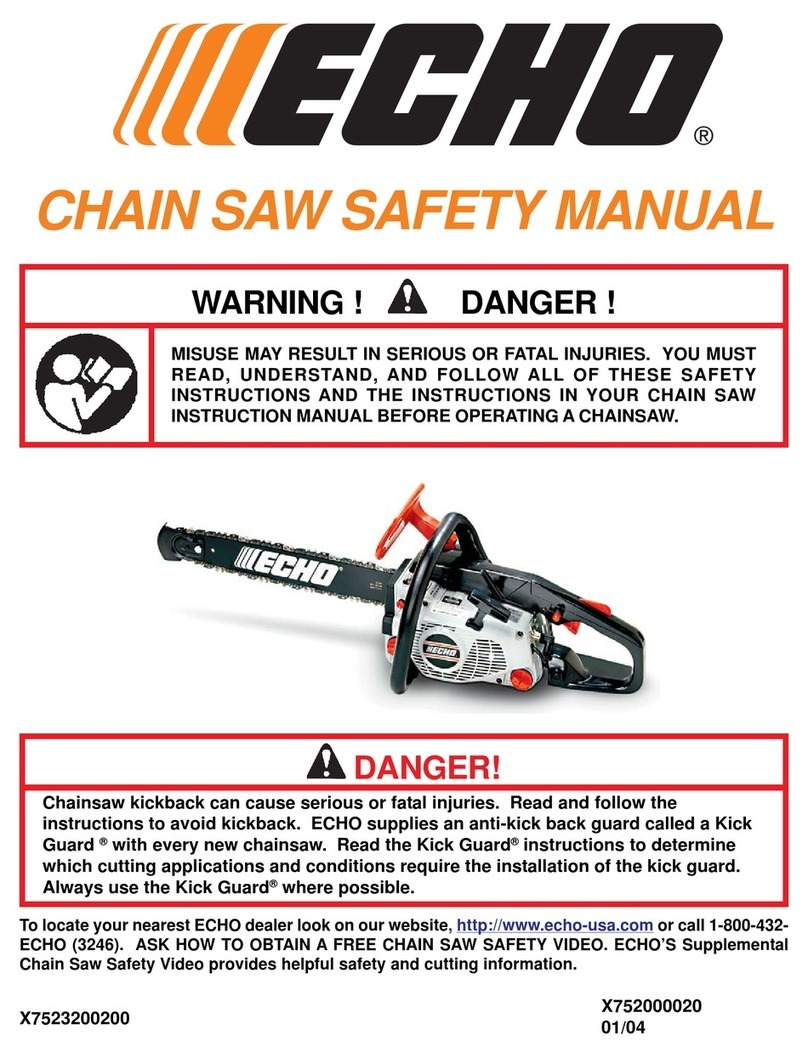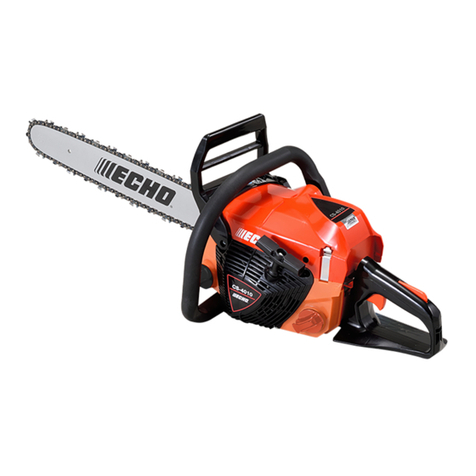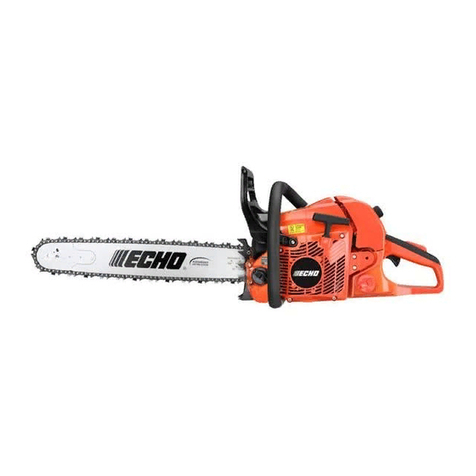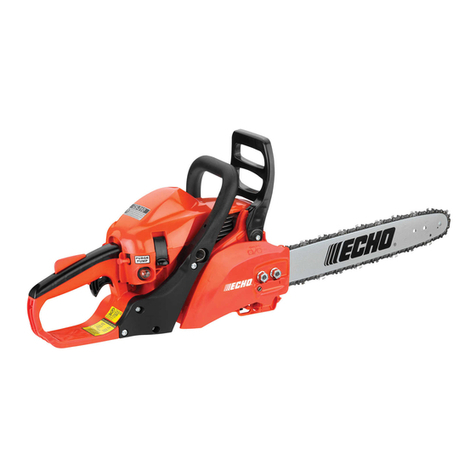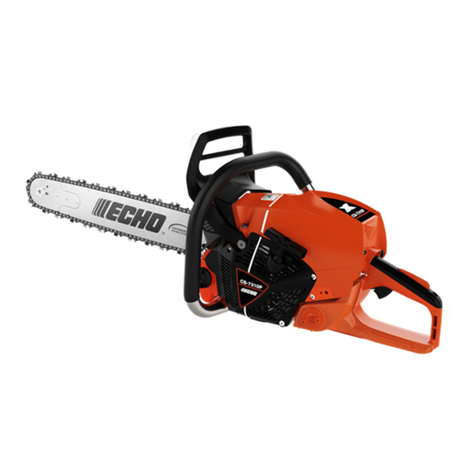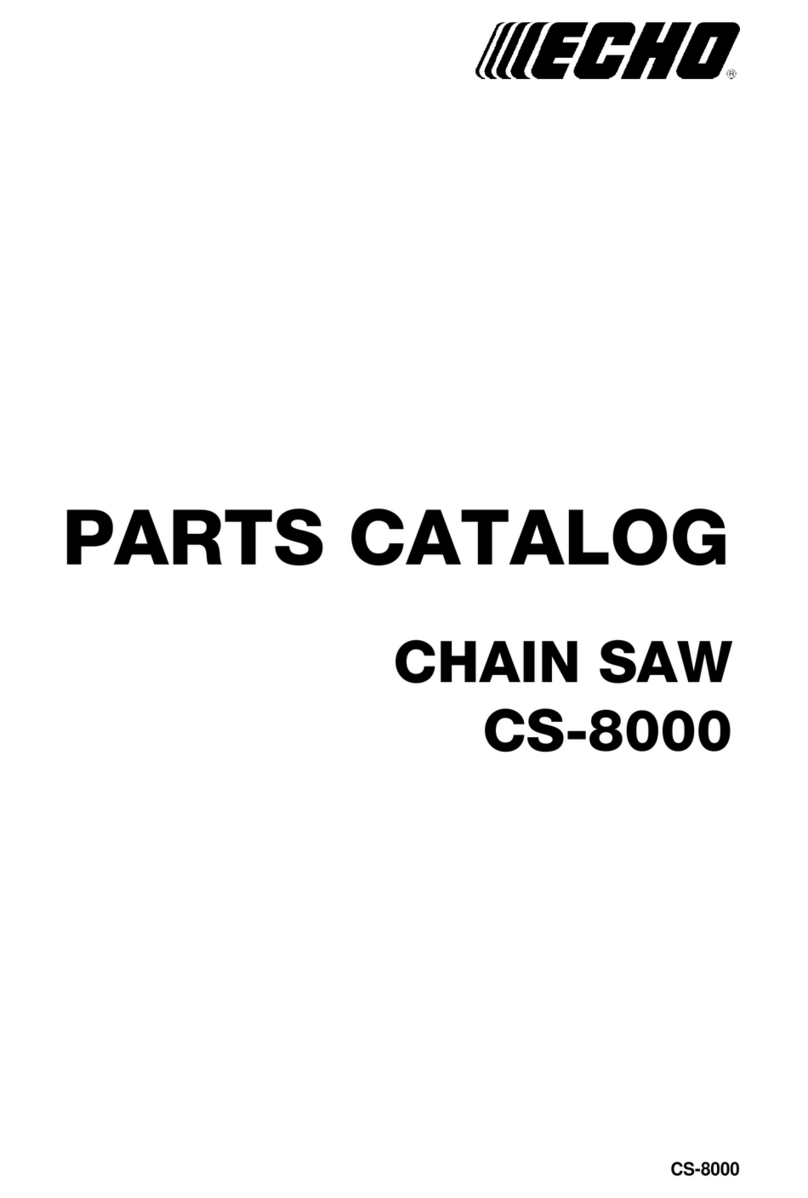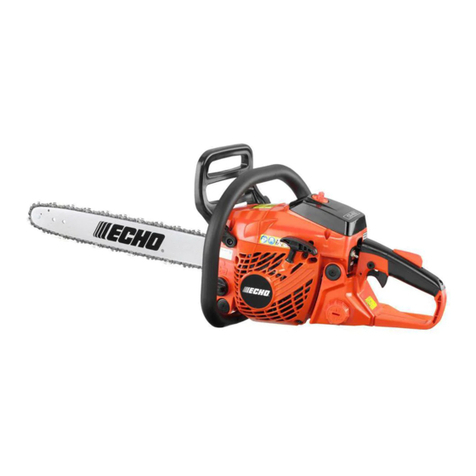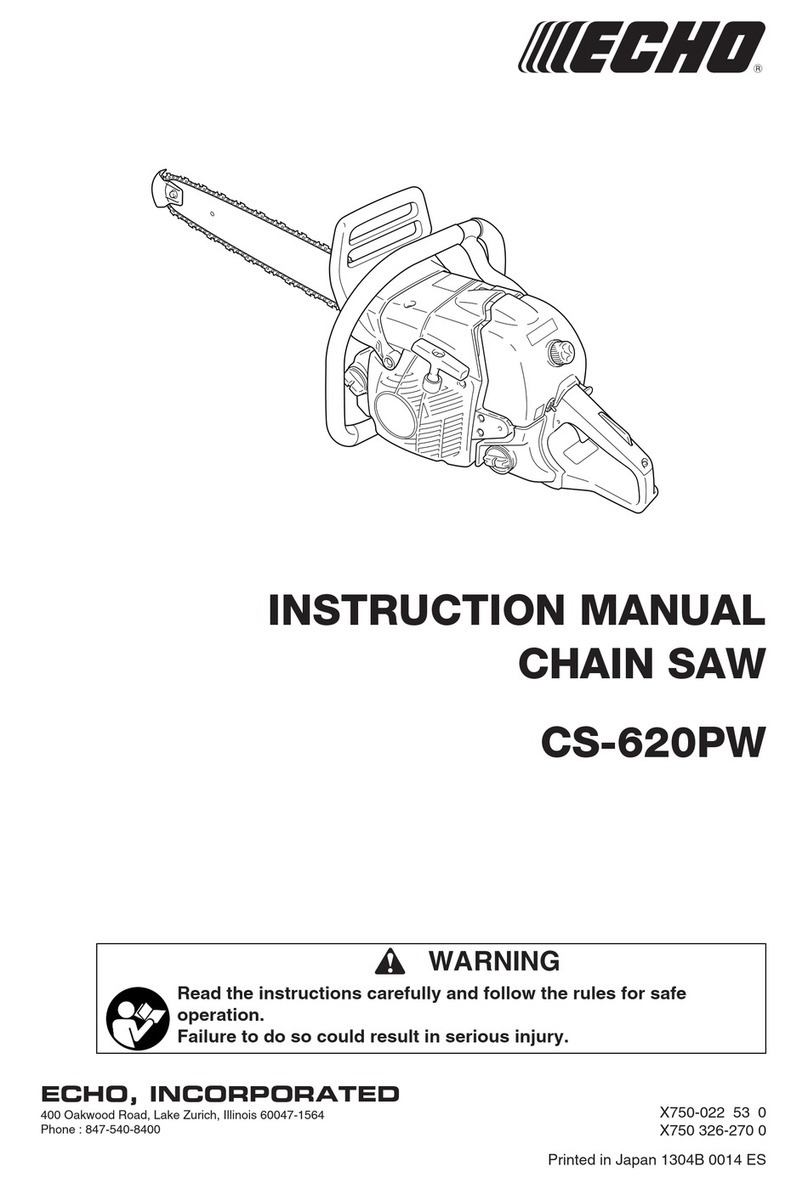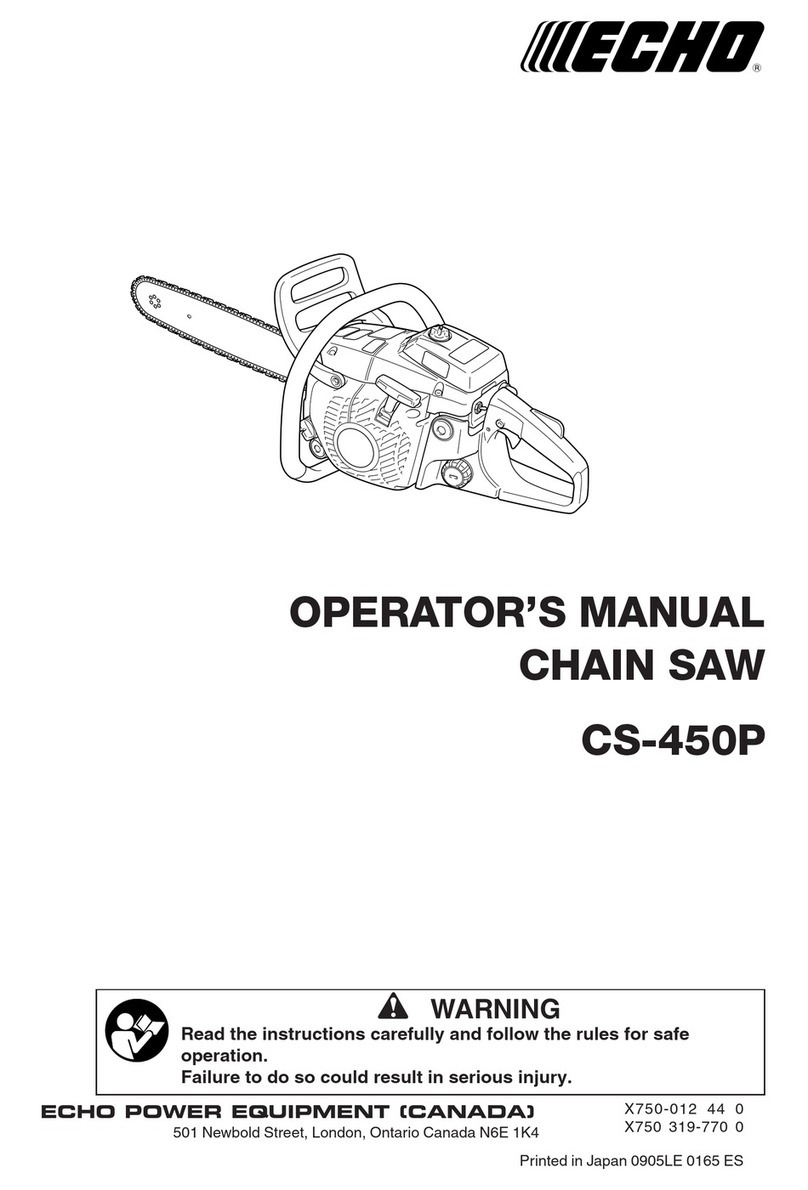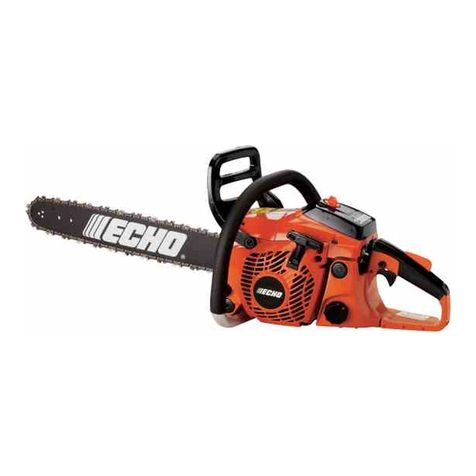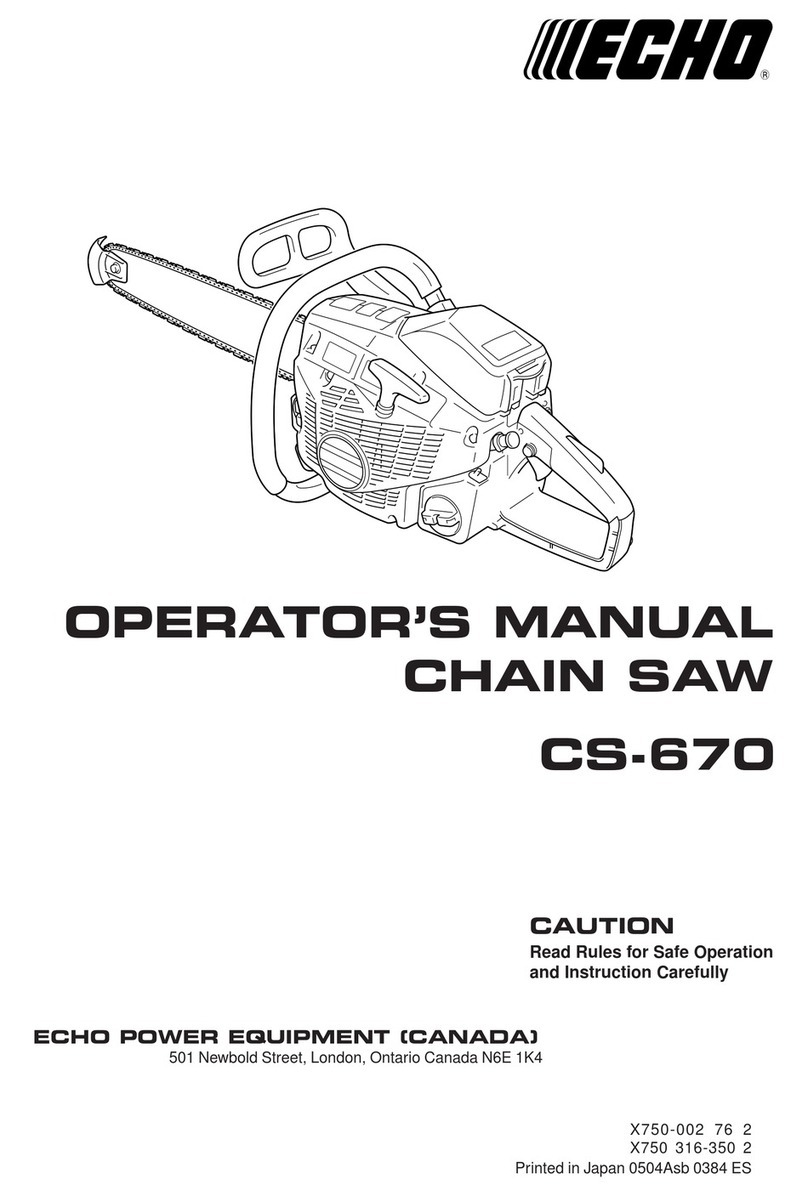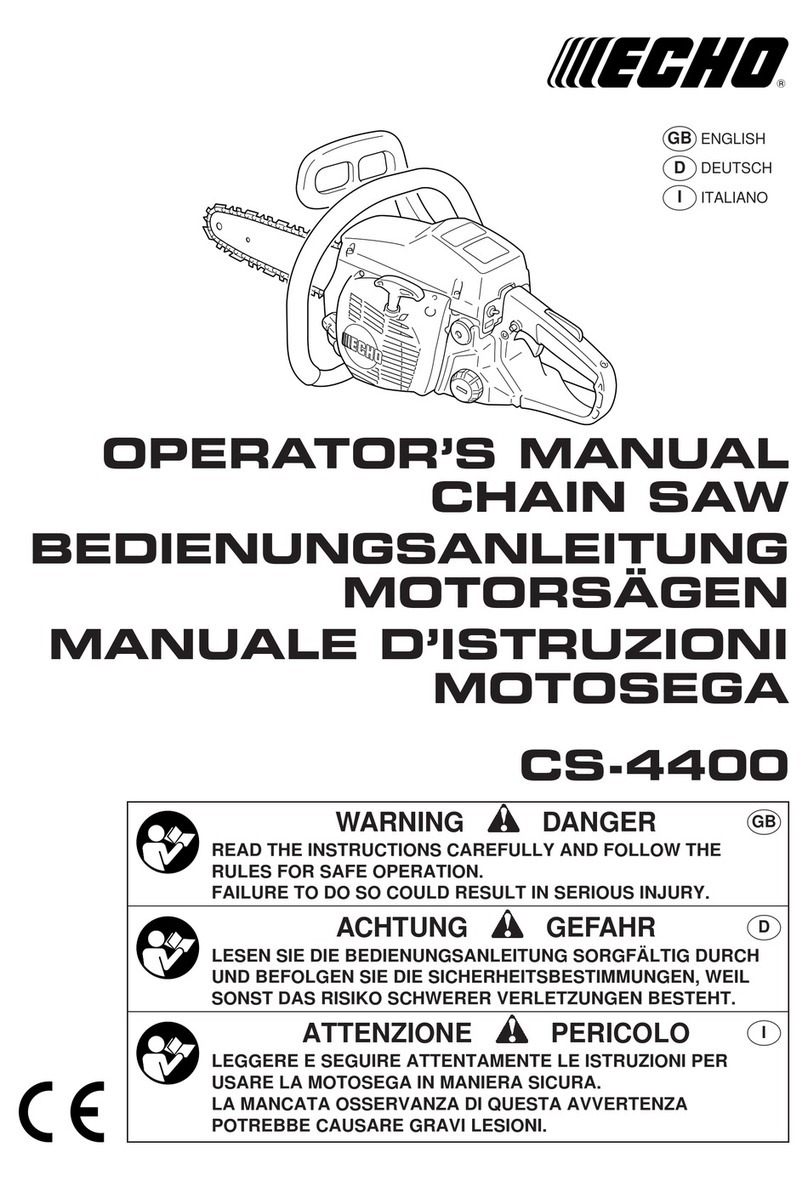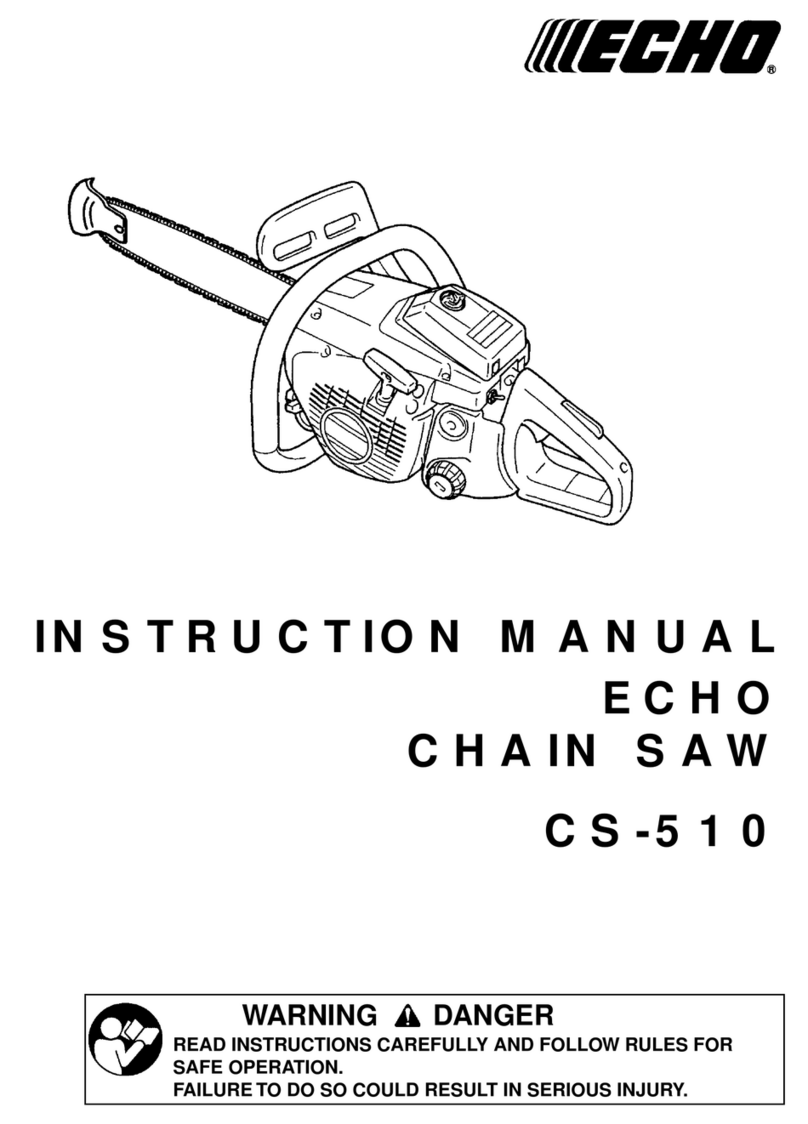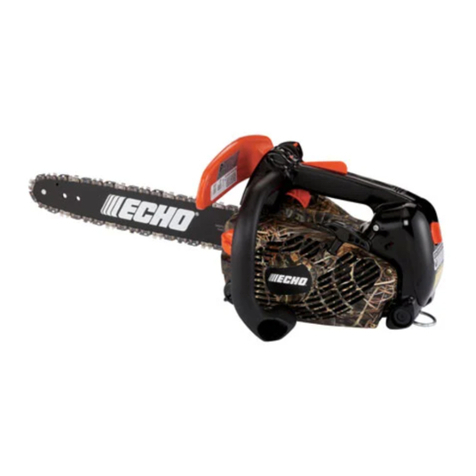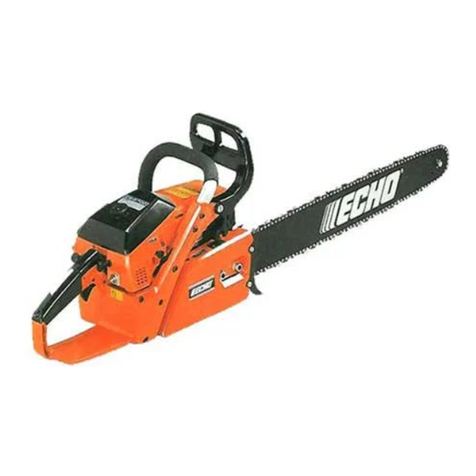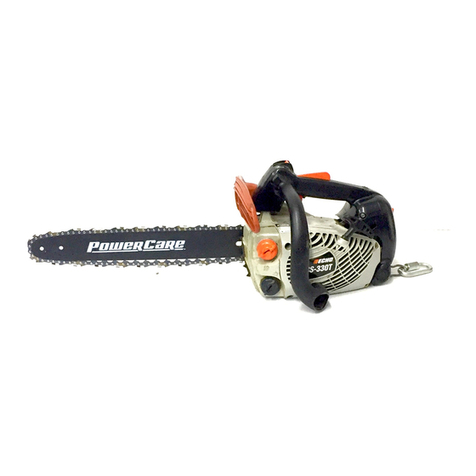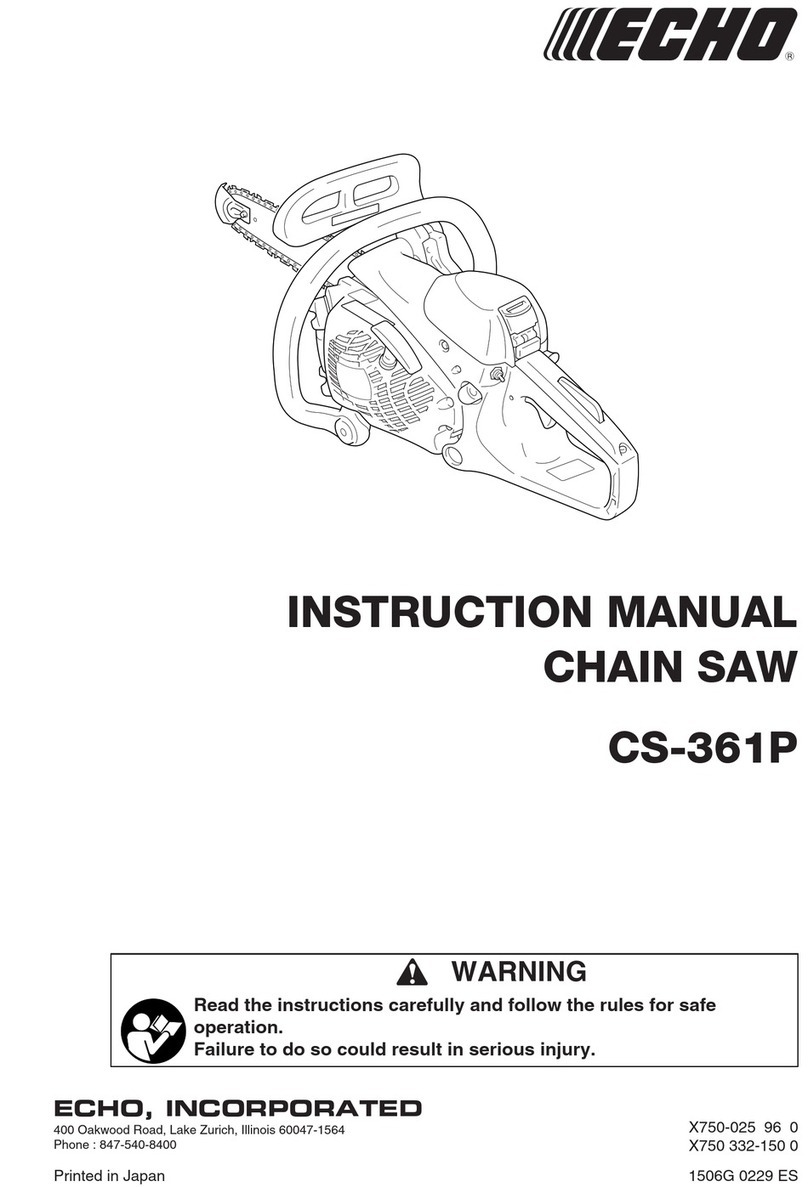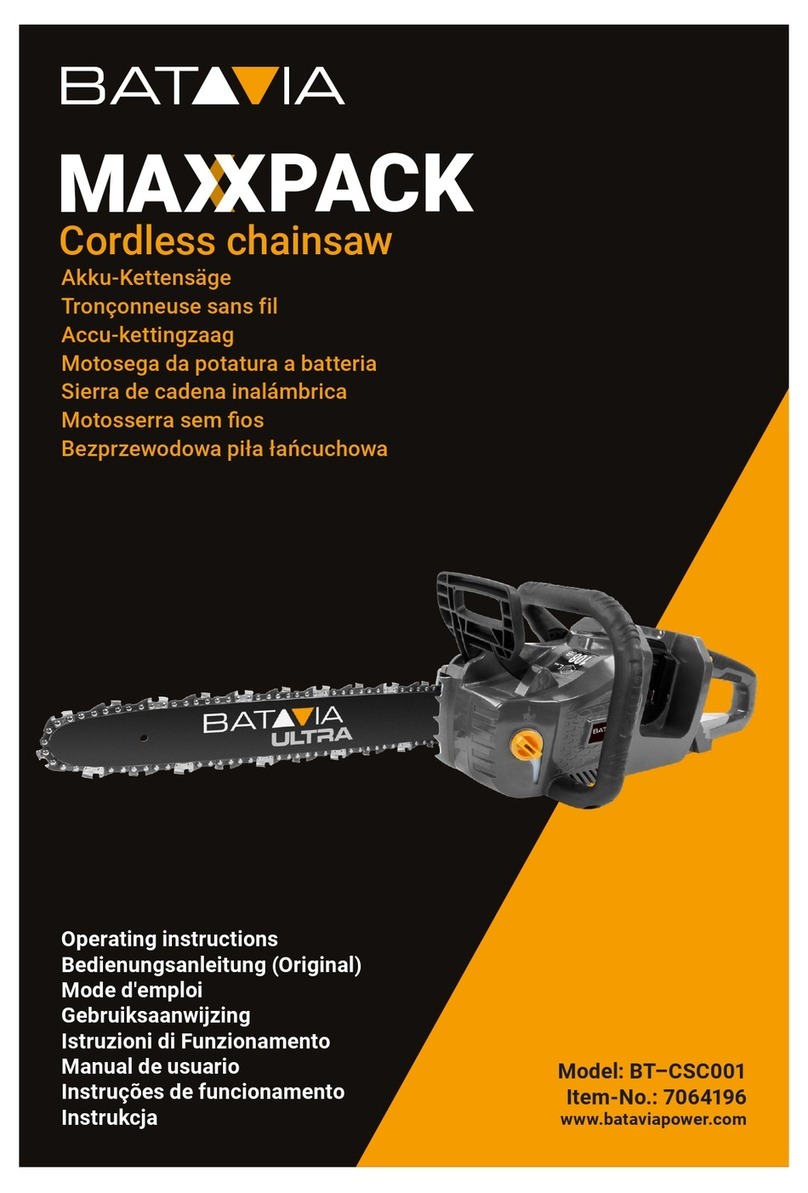
2
RULES FOR SAFE OPERATION
A. Kickback Safety Precaution for Chain Saw Users
WARNING!
KICKBACK may occur when the nose or tip of the
guide bar touches an object, or when the wood
closes in and pinches the saw chain in the cut.
Tip contact in some cases may cause a lightning
fast reverse REACTION, Kicking the guide bar
up and back towards the operator, pinching the
saw chain along the top of the guide bar rapidly
back towards the operator. Either of these reac-
tions may cause you to lose control of the saw
which could result in serious personal injury.
Do not rely exclusively upon the safety devices
builtintoyoursaw.Asachainsawuser,you should
take several steps to keep your cutting jobs free
from accident or injury.
1. With a basic understanding of kickback, you
can reduce or eliminate the element of sur-
prise. Sudden surprise contributes to acci-
dents.
2.Keep a good firm grip on the saw with both
hands, the right hand on the rear handle, and
the left hand on the front handle, when the
engine is running. Use a firm grip with thumbs
and fingers encircling the chain saw handles.
A firm grip will help you reduce kickback and
maintain control of the saw. Dont’ let go.
3. Make sure that the area in which you are cut-
ting is free from obstructions. Do not let the
nose of th guide bar contact a log, branch, or
any other obstruction which could be hit while
you are operating the saw.
4. Cut at high engine speeds.
5. Do not overreach orcutaboveshoulderheight.
6. Follow manufacturer’s sharpening and main-
tenance instructions for the saw chain.
7. Only use replacement bars and chains speci-
fied by the manufacturer or the equivalent.
B. Other Safety Precautions
1. Do not operate a chain saw with one hand!
Serious injury to the operator, helpers, by-
standers,or any combinationof thesepersons
mayresultfromone-handedoperation.Achain
saw is intended for two-handed use.
2. Do not operate a chain saw when you are fa-
tigued.
3. Use safety footwear; snug-fitting clothing; pro-
tectivegloves; and eye,hearing andhead pro-
tection devices.
4. Use caution when handling fuel. Move the
chain saw at least 10 feet (3 m) from the fuel-
ing point before starting the engine.
5. Do not allowotherpersonsto be nearthechain
sawwhenstartingorcuttingwiththe chain saw.
Keep bystanders and animals out of the work
area.
6. Do not start cutting until you have a clear work
area, secure footing, and a planned retreat
path from the falling tree.
